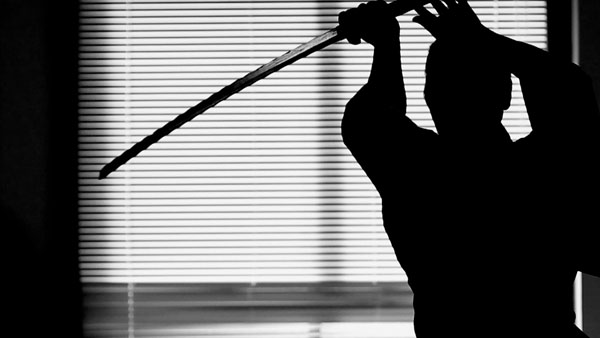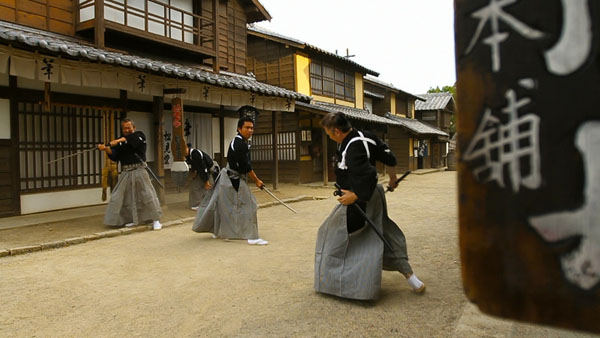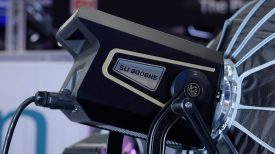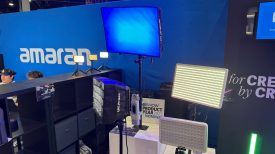The Last Of The Samurai from Matthew Allard on Vimeo.
For centuries the Japanese Samurai were the most feared and respected men in the country. But Japan’s love affair with the Samurai has faded in recent years. Now the actors who have portrayed them on the big screen for the last 60 years are finding themselves out of work. The period pieces of classic Japanese cinema are no longer being made and the famous actors who have appeared in more than a hundred movies including such Hollywood films as The Last Samurai have now been reduced to doing matinee performances in a Kyoto movie theme park.
Correspondent Steve Chao and I shot this story over 2 days in Kyoto, Japan on a Canon 7D and 5D. We shot in three different locations: a training room, a small theatre and a movie backlot.
I could have shot this on my regular camera (Sony XDCAM HD) but chose to use a DSLR because of its abilities in low light and tolerance to high contrast scenes.
I chose not to use my Zacuto Z-Finder or my Genus ND faders for this shoot, the main reason being that I find the Z-Finder difficult to use unless you’re handheld. On a tripod it forces you to put your head in a very uncomfortable position especially when you keep varying the tripod height. I ordinarily don’t use a high shutter speed but in this case I did as there was going to be a lot of fast movement and use of swords and other fighting equipment. I ran 1/125th shutter speed to highlight how quickly the actors moved. Shooting against bright windows, the DSLR held up beautifully. It still amazes me to see how tolerant these cameras are in difficult lighting situations.
The interviews were shot using two Litepanels 1×1 LED lights running V-Lock adaptors and IDX batteries. This enables me to set up lighting quickly and not have to rely on finding a power source. A Canon 70-200mm USM IS 2 f2.8 lens was used. I find this lens to be very sharp and perfect for doing interviews on a camera with a 1.6x crop factor. It enables me to get back far enough from my subjects so they don’t feel crowded.
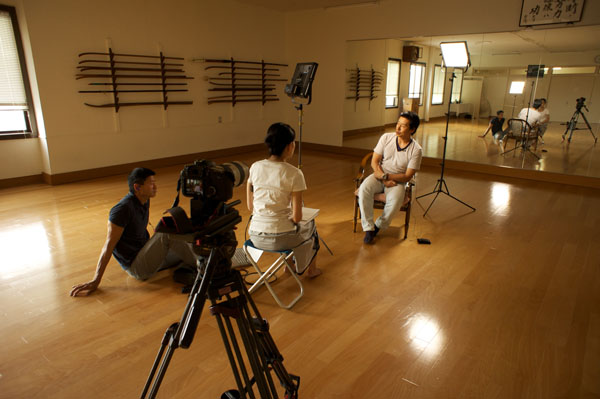
All the audio was recorded on a Zoom H4N portable recorder, which I highly recommend. For US $300 it is fantastic value. Sure you can’t control the recording level of two channels separately but that isn’t usually a problem. I use Sennheiser radio mics with adjustable output level. It was all cut in Final Cut Pro and audio synched up using Pluraleyes. No use of Magic Bullet or any fancy color correction programs was used.
In the end I was reasonably happy with the result. The opening sequence was all shot in five minutes as it was difficult to get the actors to come out to do a fight scene on the backlot. They performed the 16 second fight scene three times for me and I varied my angle for each one.
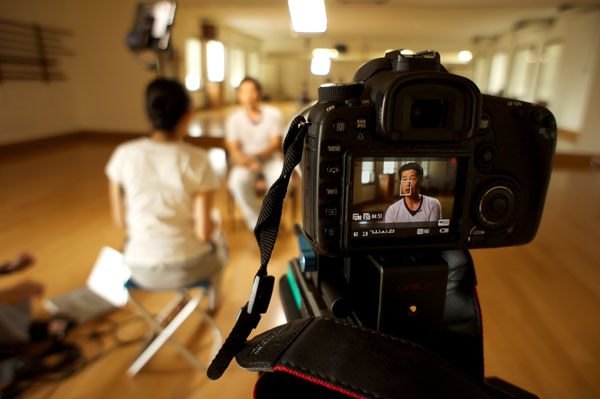
About Matthew Allard, Aljazeera Senior Field Cameraman, Kuala Lumpur:
Matt has been a Camera/Editor in TV news for 20 years, previously working for both Channel 9 and Channel 10 in Australia. Twice Network Ten Australia’s cameraman of the year as well as being a Walkley Finalist for outstanding camerawork in 2006 (for coverage of the Cronulla Race Riots) and a Logie Finalist for outstanding news coverage 2006 (Bali 9). He has covered news events in more than 30 countries, from major sporting events to terrorist bombings. Based out of the Kuala Lumpur broadcast centre in Malaysia he is an avid user and follower of new technology, shooting stories on HD broadcast cameras as well as new Canon DSLR’s.

